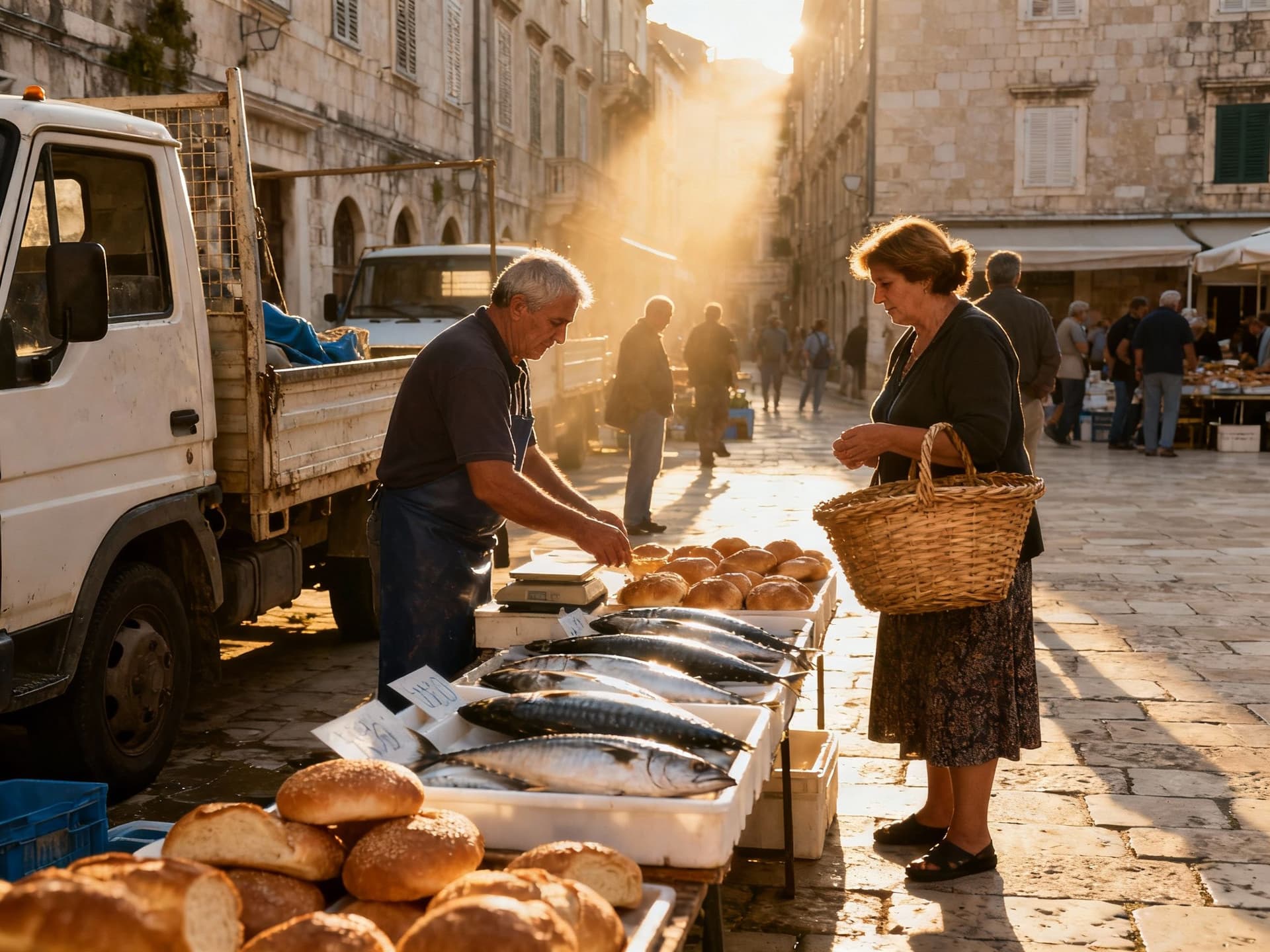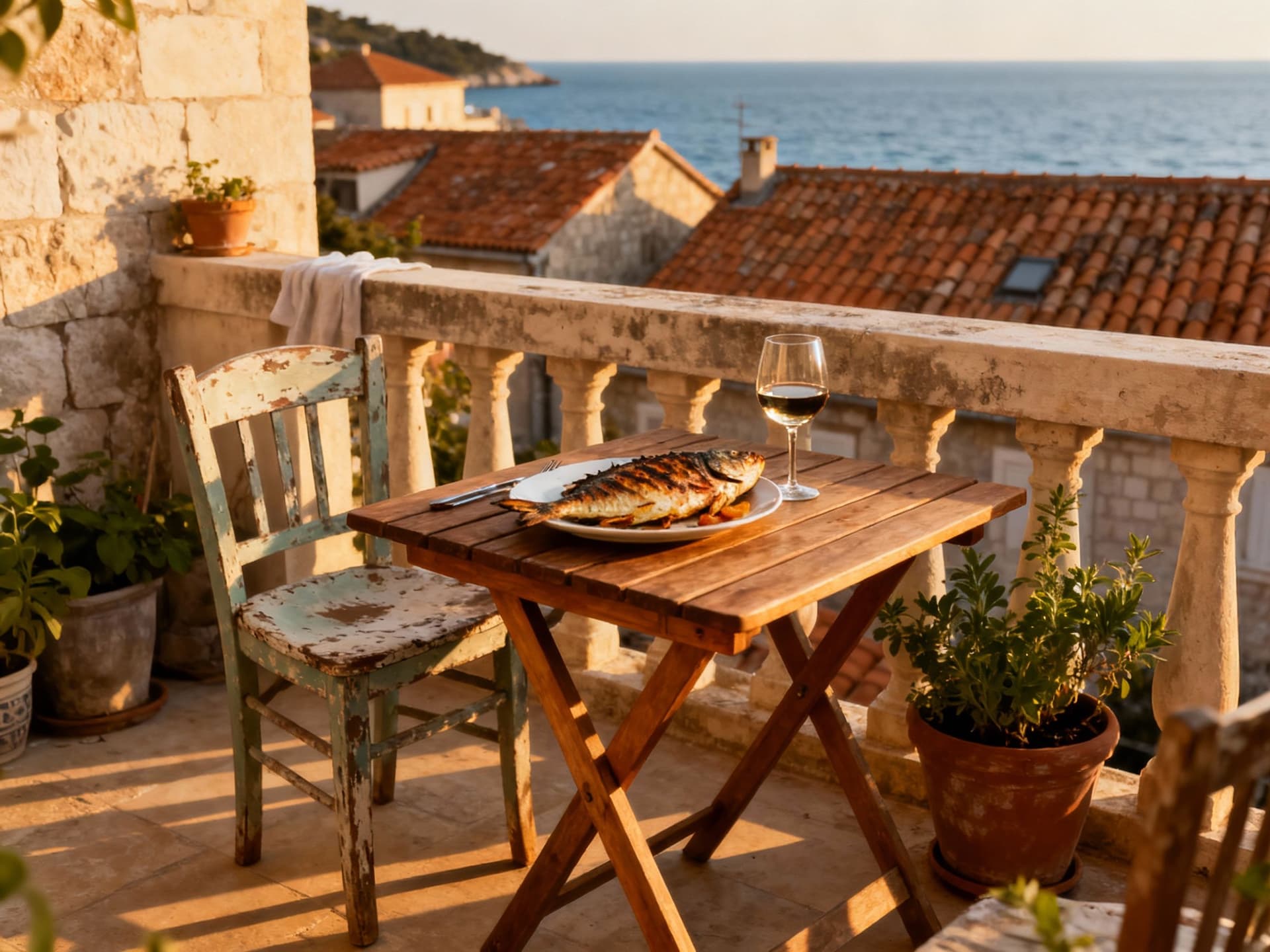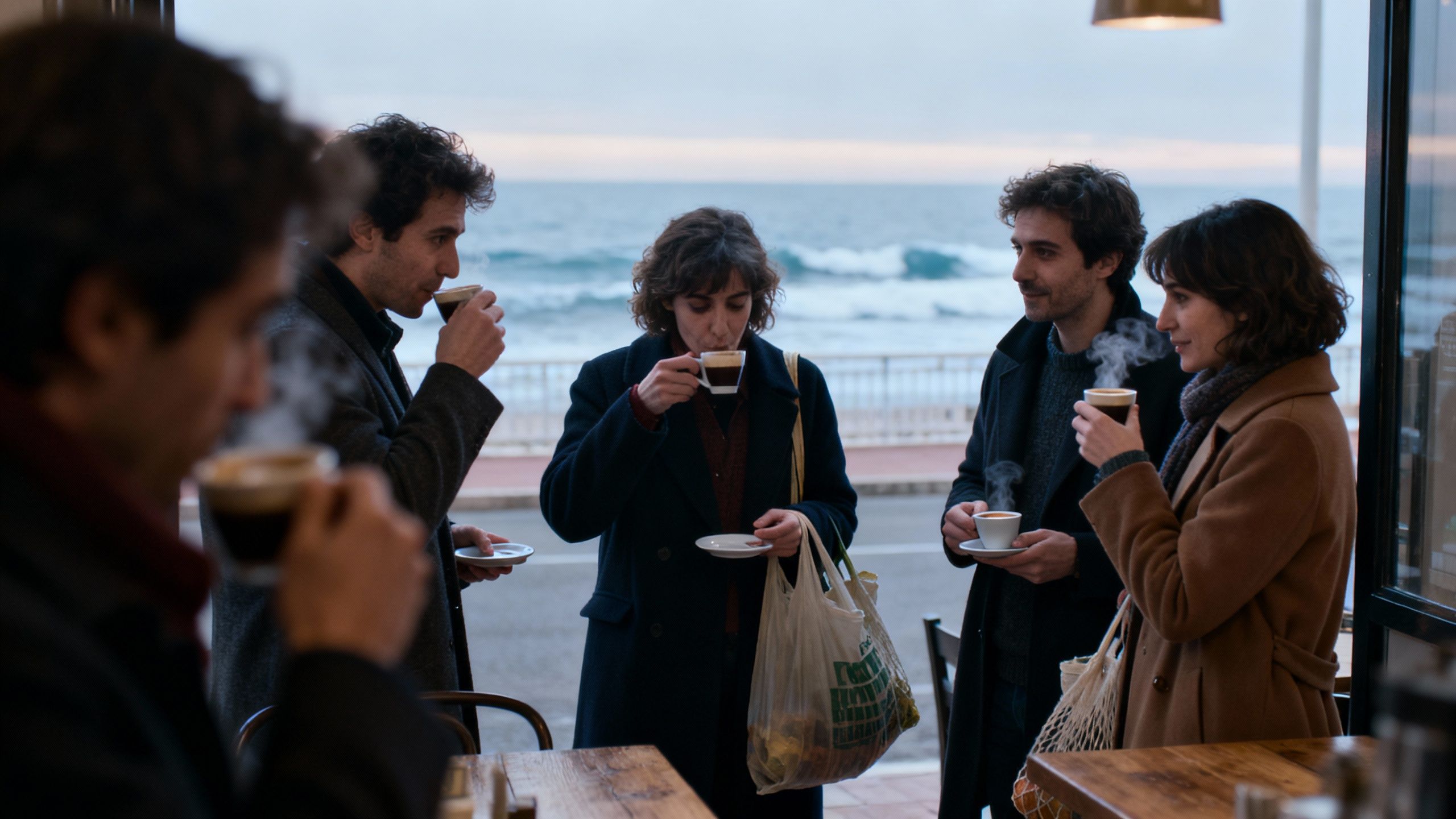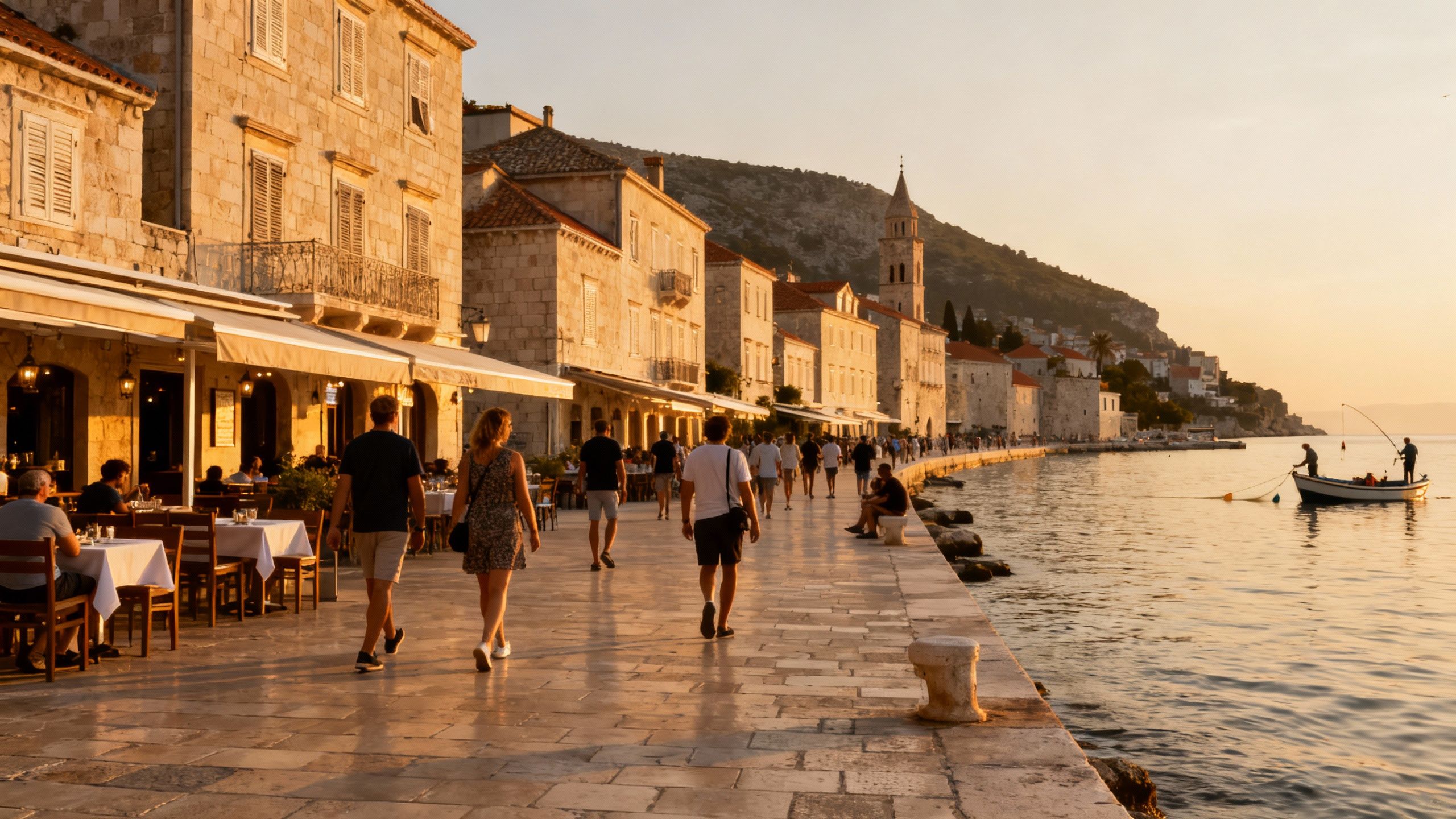Croatia: Seasonality, New Tax Reality & What Locals Know
A lifestyle-led, regulation-savvy look at buying in Croatia: why seasonality, new property taxes and municipal rules reshape value and how to protect your lifestyle investment.
Imagine sipping espresso on Split’s Riva as fishermen mend nets less than a block away. The Adriatic sun sharpens stone façades; alleyways fill with the scent of grilled sardines and pine. This is Croatia’s daily rhythm: coastal conviviality, slow-town markets, and a calendar driven by sea and festival seasons — and it’s why many international buyers fall in love first and ask questions later.
Living the Croatia life

Life here blends Adriatic clarity with continental calm. Mornings begin at local bakeries (try kifle or burek), afternoons move toward beaches or markets, and evenings gather over long meals — grilled fish on Hvar, octopus salad in Rovinj. Coastal towns pulse in summer, while inland regions such as Istria and Slavonia reveal quiet rhythms and productive landscapes.
Spotlight: Split’s Žnjan to Diocletian’s Palace
Walk from Žnjan’s pebble beaches toward the old town and you cross eras: modern seafront promenades give way to Roman stone and cafes spilling onto narrow streets. Apartments here suit buyers who want walkability, daily markets (Pazar), and a neighborhood that lives year-round rather than only in July and August.
Food, festivals and seasonal life
Festival seasons — from Dubrovnik Summer Festival to Istria’s truffle hunts — transform neighbourhoods. But the real value is in off-peak months: markets are cheaper, service providers are available, and you see how communities function without the tourist gloss. That rhythm should shape when and where you buy.
- Lifestyle highlights: Split Riva cafés, Hvar’s shoulder-season beaches, Rovinj’s seafood market, Zagreb’s Dolac market, Istrian truffle roads, Pakleni Islands boat mornings.
Making the move: lifestyle meets legal reality

Falling in love with place is the start. The next step is understanding how recent legal and fiscal shifts change long-term costs. Croatia has moved to recalibrate property taxation and local annual levies — changes that affect holding costs, short-term rental viability, and municipal incentives for long leases. These are not theoretical: they change cashflow and resale assumptions.
Property types and how they shape daily life
A restored stone apartment in Dubrovnik offers texture and centrality but higher maintenance. A new coastal build in Makarska gives modern systems and insulation but often sits outside the pedestrian core. Choose by how you want to live: terraces and sea views for outdoor seasons; compact historic flats for daily urban life; villas for year-round privacy.
Work with experts who know the real costs
- 1. Verify municipal annual tax rates before offers. 2. Ask sellers for utility and tourist-rental histories. 3. Factor in new municipal rules on long-term lease exemptions. 4. Get a local tax lawyer and notary to confirm transfer-tax base and exemptions.
Insider knowledge: misreads, myths and what expats wish they’d known
Myth: All coastal property is a simple cash generator. Reality: many coastal units face seasonal vacancy, municipal taxes targeted at short-term lets, and higher maintenance. Expat owners who planned for year-round occupancy or diversified rental strategies fared better. Local nuance — which street, which stairwell, which access road — matters more than wide market labels.
Cultural integration and daily practicalities
Croatians value direct relationships. Neighbour introductions, a local baker who knows your name, and learning a few phrases go far. For practicalities: waste schedules, building co-op rules (etažna svojina) and parking norms shape how pleasant daily life becomes. Expect bureaucracy to be formal but workable with a patient, documented approach.
Long-term view: what will your life look like in five years?
Ask whether you want a weekend escape or a community to join. Properties near schools in Split or Zagreb age differently than tourist flats in Zadar. Consider resale paths: city centres appeal to long-term domestic buyers; well-specified rural properties appeal to returnees and remote workers.
- Red flags local agents flag: missing building permits, unclear ownership chains, undeclared rentals, unresolved communal charges, and recent municipal tax increases affecting effective yields.
Next steps: spend time in neighbourhoods off-peak, secure a Croatian tax lawyer and notary, insist on audited utility and rental histories, and get written municipal tax confirmations. These steps preserve the life you fell for and protect the investment behind it.
British expat who relocated to Marbella in 2012. Specializes in rigorous due diligence and cross-border investment strategies for UK and international buyers.


